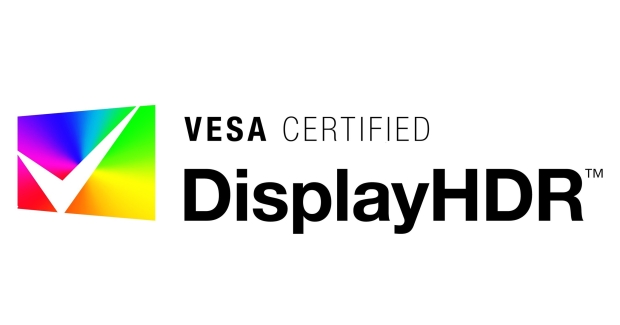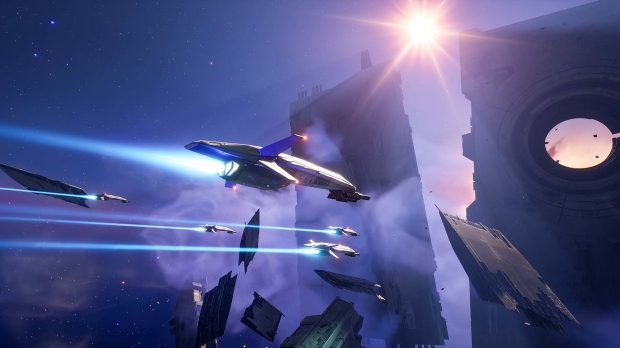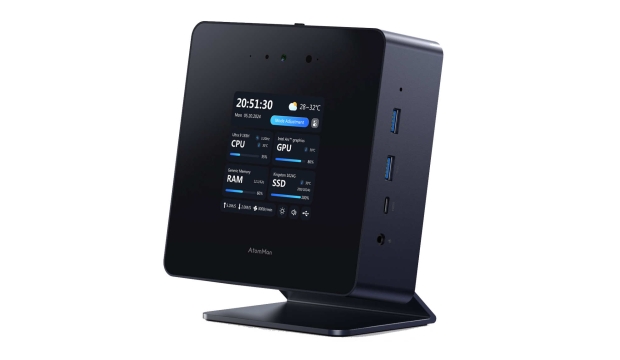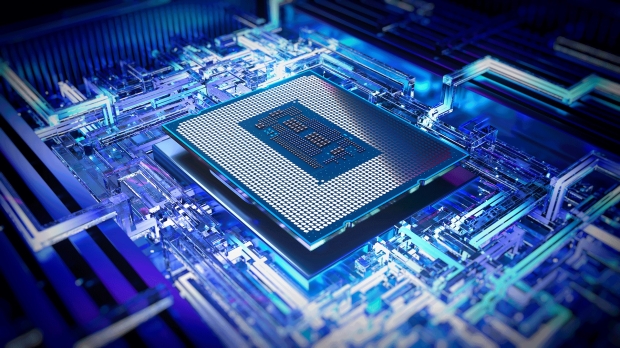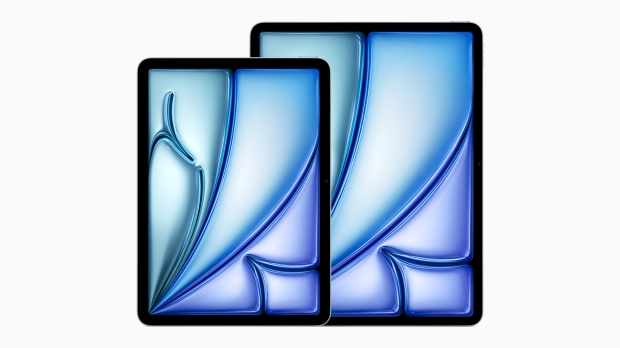Microsoft plans to shift to MT/s memory speed instead of MHz in new Windows 11 update
It seems Microsoft is finally testing the display of memory speeds as MT/s (mega-transfers per second) over the traditional MHz (megahertz) in the Windows 11 Task Manager.
PhantomOcean3, a self-proclaimed Windows sleuth, noticed that Microsoft is now testing showing MT/s for RAM instead of MHz in the Windows 11 Task Manager performance tab. Why is this important?
We see the data transfer speed of computer memory (RAM) advertised with the MHz metric, which represents how many millions of cycles per second the memory module can perform, with each of those cycles being an action on the memory module itself, like storing and retrieving data.
VESA announces DisplayHDR 1.2 specifications with tighter performance requirements
VESA has just announced a major update to its High-Performance Monitor and Display Compliance Test Specification (DisplayHDR), which launched the display industry's first fully open standard specifying high dynamic range (HDR) quality.
The new updated spec, DisplayHDR version 1.2, includes significantly tighter performance requirements, including for luminance, color gamut, and bit depth. There are also multiple new test requirements for color accuracy, contrast ratio, black levels, and subtitle flicker, that VESA (the Video Electronics Standards Association) addresses for recent advanced in display technology.
VESA explained on their press release that companies can begin certifying products under the new DisplayHDR 1.2 spec today, while continuing to allow products to be certified under the previous DisplayHDR 1.2 spec through to the end of May 2025 for monitors, and May 2026 for laptops.
DLSS support coming to Homeworld 3 and a couple of Early Access titles this week
Upscaling tech is such a big part of PC gaming that NVIDIA announces which titles are adding support for DLSS Super Resolution and DLSS 3 Frame Generation every week. However, with that said, only a handful of PC games are adding support this week - limited to DLSS Super Resolution or DLSS 2. There's no Frame Generation, but hey, there's always next week.
The big one is the long-awaited Homeworld 3 from Blackbird Interactive and Gearbox, which launches on May 14. This strategic sci-fi RTS takes place in beautifully rendered 3D spaces, and for all GeForce RTX owners, DLSS 2 will boost performance while maintaining the game's impressive visual fidelity. Homeworld 3 is the latest installment in a long-running and beloved PC franchise, so there's definite hype surrounding its launch.
The second game getting DLSS 2 support is a little more unknown. It's an Early Access RPG available to play on Steam and already sitting on a 'Mostly Positive' user review rating. With survival mechanics, exploration, action, resource and town management, story, and armies to command in a medieval setting, Bellwright is worth checking out.
Minisforum AtomMan X7 Ti Mini-PC: Core Ultra 9 185H CPU, touchscreen, video camera, OCulink
Minisforum is gearing up to launch its new AtomMan X7 Ti Mini-PC, featuring an Intel Core Ultra 9 185H "Meteor Lake" CPU, a built-in 4-inch touchscreen, OCulink connectivity, and so much more.
First off, the AtomMan brand from Minisforum is something new, aimed at the Mini-PC market and offering something different than what we've seen over the years. Inside, the new AtomMan X7 Ti features some high-end components, including Intel's flagship Meteor Lake CPU with the Core Ultra 9 185H.
Minisforum's new AtomMan X7 Ti Mini-PC is the first product to feature an Intel Meteor Lake CPU and the new Dynamic Screen, a 4-inch touchscreen that shows system monitoring information like real-time temperature monitoring, CPU, GPU, SSD usage, and more.
Intel Arrow Lake rumored to be the best part of 1GHz slower than 14th-gen CPUs
Intel's next-gen flagship CPU could be dialing back clock speeds considerably - by a whole lot, in fact, at least if this leak turns out to be correct.
Upfront, let's arm ourselves with the usual helping of seasoning, and indeed a heavier dose than normal here, as this is a rumor that comes from Weibo, not exactly our favored source for reliability (though it does get some things on the money).
At any rate, Wccftech noticed that user 'MebiuW' posted about how Intel's Arrow Lake range - which could be revealed in Q3 - will witness clock speeds being reined in considerably.
Weight quirk means the M2 iPad Air is actually heavier than the high-performance M4 iPad Pro
Back when Apple started to use the Air name with the MacBook Air and original iPad Air, it was used as a way to symbolize just how thin and light the devices were. It made a ton of sense and it's remained that way for years. However, as the rest of Apple's tablet and laptop lineups have continued to also shrink in size and weight, things have started to get a little more complicated. Now, the release of the M4 iPad Pro and M2 iPad Air have proved that point once more.
As noticed by MacRumors, the new M4 iPad Pro is actually lighter than the M2 iPad Air, something that seems strange when you remember that the iPad Air is supposed to be the thin and light tablet of the two.
To put things into perspective, the 13-inch iPad Pro weighs just 1.28 points or 579 grams whereas the 13-inch iPad Air comes in at 1.36 pounds or 617 grams. Those who prefer their tablets to be a little on the smaller side will notice that the 11-inch iPad Pro weighs just 0.98 pounds or 444 grams, while the 11-inch iPad Air measures 1.02 pounds or 462 grabs.
The new iPad Pro and iPad Air sport familiar battery life figures despite power-sipping chips
When Apple announced the new M4 iPad Air and a revamped M2 iPad Air, including the all-new 13-inch display option, the company didn't make a big deal about the battery life that buyers can expect from either one. Apple did however note that the M4 chip is more power efficient than the previous-generation M-series chips, but that was as far as things got. So it's perhaps interesting that Apple's published battery life for the new iPads is essentially the same as it has been for years.
As MacRumors points out, Apple says that the new iPads both manage the same 10 hours of battery life that the company has been advertising for years, and that's notable given the fact that both of these tablets now have better, more power-efficient chips than the models that they replaced. It's notable that the new chips are also faster of course, so there's a trade-off to be made there.
The new M4 chip is built on a second-generation 3nm manufacturing process which means that it's more power efficient than even the M3 that came before it. It also has six efficiency cores which is two more than the M2 that was in the 2022 iPad Pro that this new model replaces. The tandem OLED display is also thought to be more energy efficient, all things that might have been expected to allow Apple to save some battery life and increase performance.
Buying an M4 iPad Pro or M2 iPad Air? You won't get one iconic thing in the box anymore
The new M4 iPad Pro and a refreshed M2 iPad Air are now available for preorder after they were announced during the Let Loose event yesterday. The event was a big one despite its relatively short length, unveiling not only the new tablets but also a new Apple Pencil Pro and a refreshed Magic Keyboard. All of those new things are now available for preorder and they'll officially go on sale on May 15. But those who choose to pick up a new iPad Pro or iPad Air won't get something that Apple device buyers have become so used to.
That thing isn't something that's a big deal but it's something we're so familiar with. The thing? The familiar Apple stickers that have been included in boxes for decades at this point.
The news hasn't been confirmed by Apple but a 9to5Mac report based on a memo that has been distributed to Apple Store teams notes that there will be no stickers included in any of the new iPad boxes.
The M4 iPad Pro has a new OLED display with a variable refresh rate, but no always-on display
Apple announced the brand-new M4 iPad Pro yesterday and it brings with it some big upgrades, not least that superfast M4 chip that everyone's talking about. But the thing that most people will notice first is likely to be the new OLED display and it's something that Apple focused on heavily, too. But there's one feature that we would have liked to have seen arrive that was sadly missing - an always-on display like the iPhone 15 Pro.
An always-on display was never seriously rumored for the arrival of the new iPad Pro but the news that it would be using an OLED display similar to the iPhone had given some hope that Apple might spring a surprise. Now, Apple has published technical specifications for the new iPads and has confirmed that the new OLED display features a variable refresh rate that can go as high as 120Hz and fall to just 10Hz. And as impressive that is, and as much battery life it could help the iPad save, it doesn't go as low as the iPhone 15 Pro display's 1Hz. And it's that 1Hz refresh rate that is needed to offer an always-on display.
The iPad Pro has offered a 10Hz refresh rate since 2017 with the tablet fluctuating between 24Hz and 120Hz depending on what the device is being used for at the time. The high refresh rate is useful for high-speed on-screen content and fluid animations, but refreshing the display that many times per second can impact the battery life terribly. Moving to a 10Hz lower refresh rate will help Apple save battery life to be sure, but 1Hz would have been even better.
Buying a 1TB M4 iPad Pro will get your double the RAM and an extra CPU core thrown in
Apple announced the brand-new M4 iPad Pro yesterday alongside the new M2 iPad Air and the Apple Pencil Pro, not to mention the revamped Apple Magic Keyboard for the iPad Pro. There was plenty announced during the event, but it's the M4 iPad Pro that's particularly notable. It's a hugely powerful tablet and one that comes with plenty of RAM and storage. But it turns out that if you pick two particular storage options you'll also get some other things thrown in for good measure, too.
Apple didn't make a big deal out of the news when it announced the M4 iPad Pro, but it's since been discovered that anyone who spends the extra $600 to upgrade from 256GB of storage to the 1TB model (or higher) will also get an additional CPU core and twice as much RAM.
Apple has historically not chosen to give details about what cores the iPad has and how much RAM is offered, but in the case of the M4 it turns out that the base model with 256GB of storage comes with an M4 chip that has a 9-core CPU. But if you then choose to buy a 1TB or 2TB storage option you'll actually get an M4 chip that has a 10-core CPU instead. You'll still get the same number of GPU cores so there is nothing of note there, but it's interesting that Apple is putting two versions of the same M4 chip into the same tablet here.


